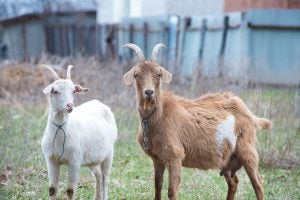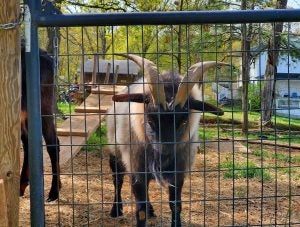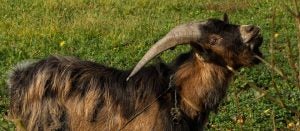Knowing the differences between breeds, and the options available with each, can go a long way in reducing problems with goat horns
As every farm kid knows — mess with the goat and get the horns. All kidding aside though, goat horns come with the goat and can be a problem if not handled properly. In fact, many goat owners prefer to have the horns removed, or work with polled goats, meaning those naturally hornless, although there are a number of genetic downsides to those.
Meanwhile, knowing the differences between breeds, and the options available with each, can go a long way in reducing problems with goat horns. And those problems can be substantial. In addition to the obvious concerns one might have with the damage caused by horned goats fighting among themselves, the rambunctious nature of the animal makes for a pain in the rear when applied to people, pets, and children, in particular. The horns can also become broken or damaged when tangled up in fencing and wires, meaning more expenses yet.
As with all livestock-related issues, knowledge is power, and good farmers better know their p’s and q’s when it comes to goat horns.

A reason for being
Goat horns aren’t just for decoration, hence the ongoing debate about whether dehorning is cruel or necessary. But the primary function of the goat horns is to serve as an air conditioning system, of sorts, during hot weather. The horns help regulate internal temperature, which is why experts recommend against dehorning breeds such as the Angora, the mohair fleece of which can easily overheat the animal in hot weather.
The second function of goat horns is for protection. Goats communicate by butting and ramming, sometimes with affection, other times with aggression. To that extent, goat horns are part of the natural makeup of most breeds and there is a reason for being. If you’ve decided to dehorn your goats, either a veterinarian or someone very experienced in the process should be called for the job. Done improperly, brain damage can result, and the horns may grow back. Goats are typically dehorned early, within the first two weeks before the horns break through the skin. Keep in mind that a main artery grows down the horn, and if too big when cutting, the animal could bleed to death. The process is performed with a hot iron and the buds are burned as the cuticle is killed to stop further growth.
Goats born without horn buds are referred to as polled. The naturally hornless goat is bred that way as a result of recessive-gene combinations, meaning both parents had the gene. Unfortunately, the same genes that make goats hornless also carry a DNA code that results in infertility, and two polled goats bred together can often produce hermaphroditic kids, or goats with both male and female sex organs.
But all the reasons for being won’t do an owner much good if their goats get horns stuck in a feeder, or continue to tear up fencing. This is particularly the case for folks who keep goats more as pets as opposed to those who can let them roam freely through the pastures and woods as the same nature that gave them horns intended.

Different breeds, different needs
As with every other trait, different breeds of goats possess different forms of horns, perfectly suited for the environment from whence they originate. Consider that the various breeds of fiber goats, such as the Angora, originate in mountainous areas where big horns not only helped regulate temperature, but served as valuable weapons in the battle for survival. To that extent, Cashmere goats typically have impressive racks, whether droopy or long and curly. Due to the considerable fiber growth on these animals, neither the Cashmere nor Angora are typically dehorned as overheating could occur.
Meat goats, such as the Spanish breeds, tend to be more diverse in their horn styles, with some resembling the racks of antlers found on moose. Racks such as these, and those found on Myotonic goats — or fainting goats — can be quite substantive, and as they’re likely to be the type a small producer might desire for fattening up, would be among those considered for dehorning.
Dairy goats, on the other hand — whether the Guernsey, Nubian, Alpine, or Oberhasli — tend to have smaller horns.

Handling goat horns
Depending on what your purpose is for having goats, the question of horns is one to consider. Folks with lots of woods and hills on which they can roam might not need be as concerned as those with closer quarters. But as every goat enthusiast knows, the animals need loving care, and horn health is something to keep in mind.



